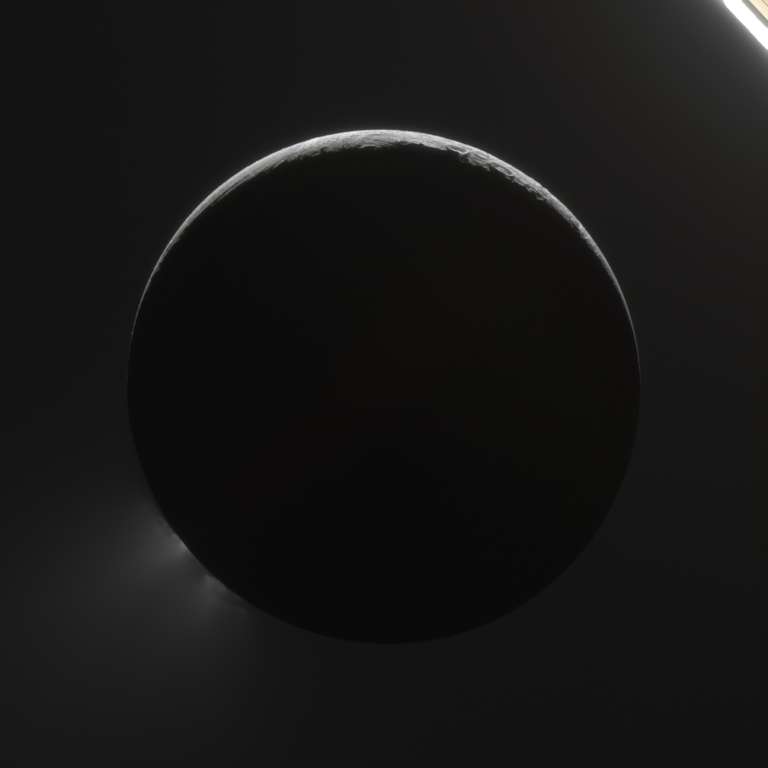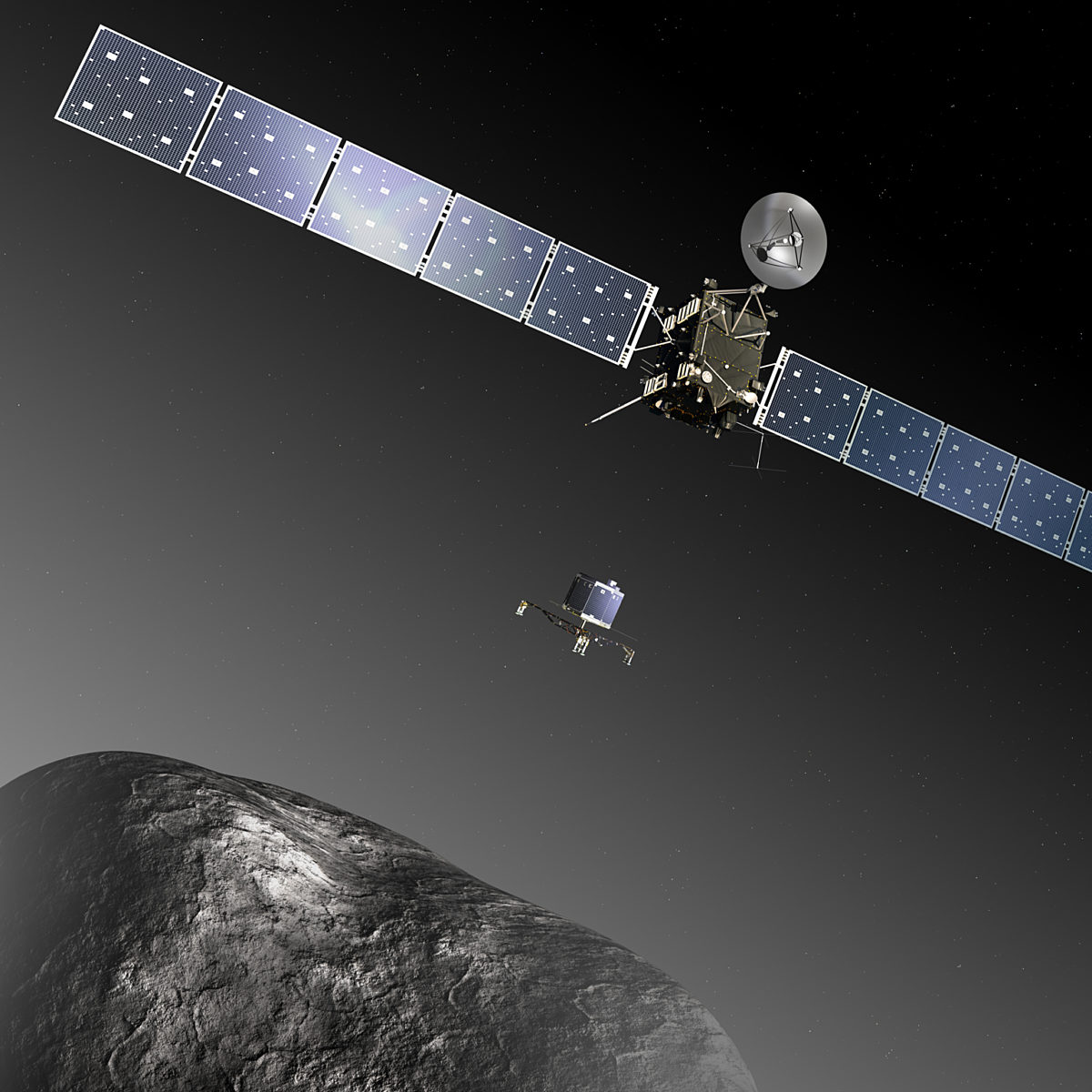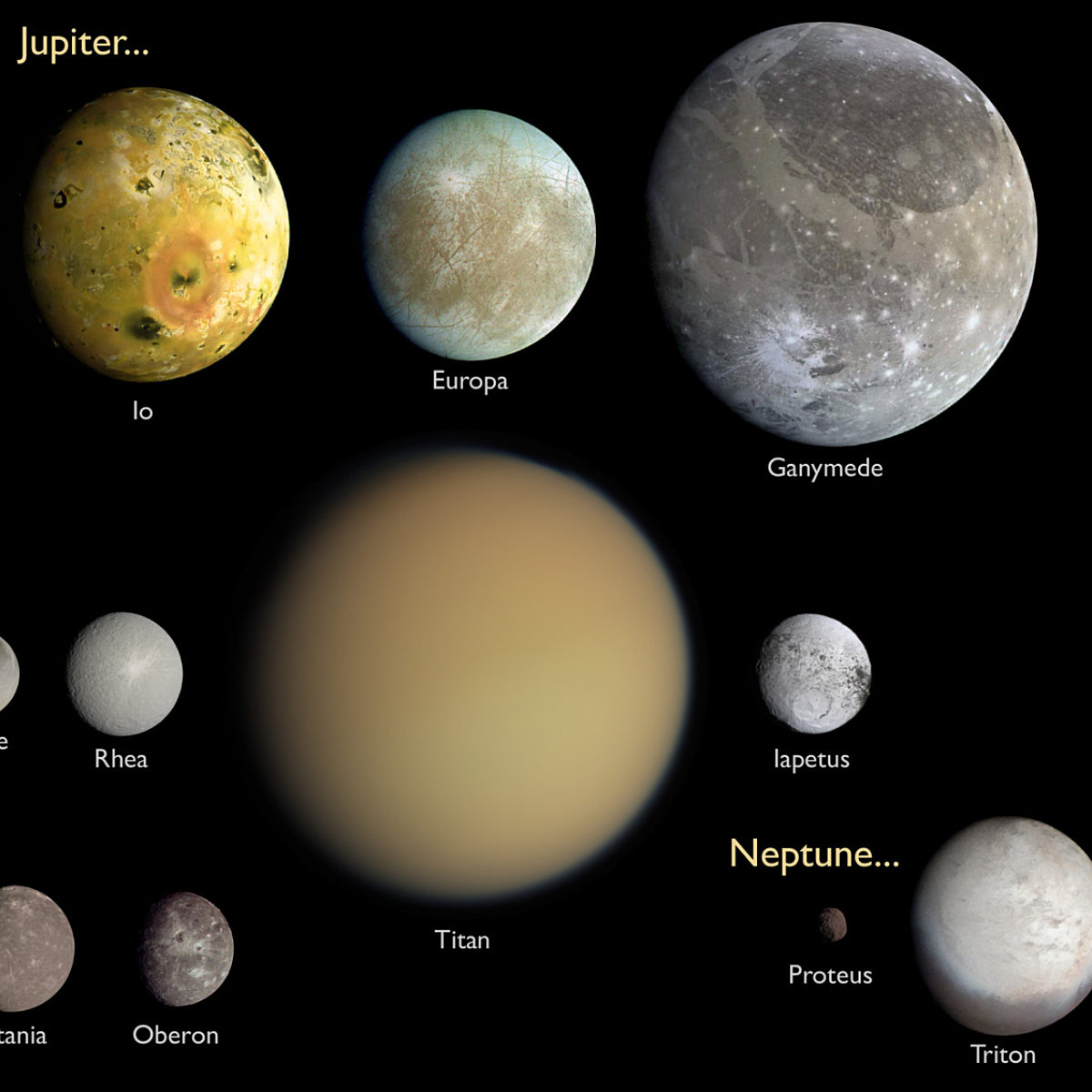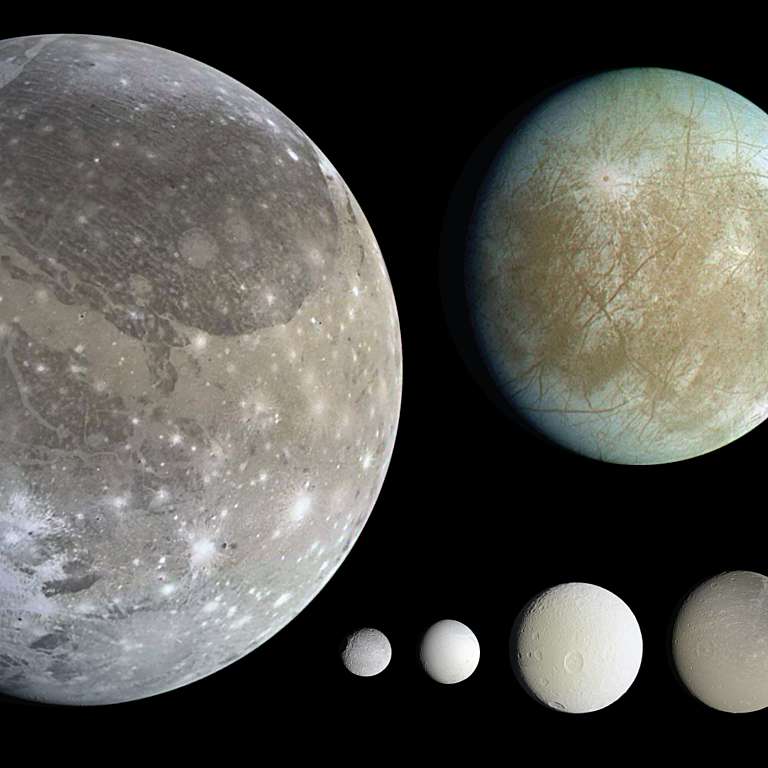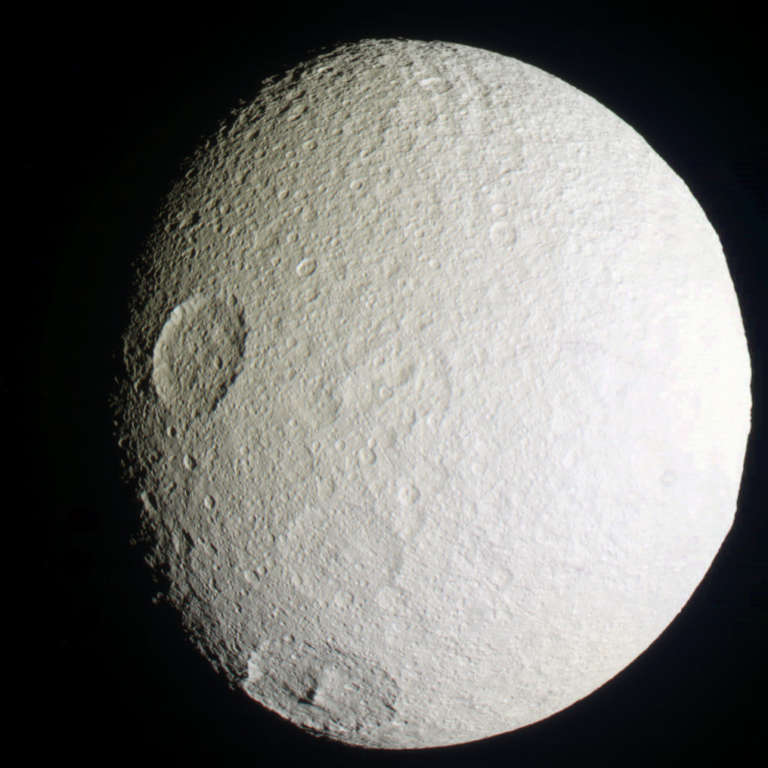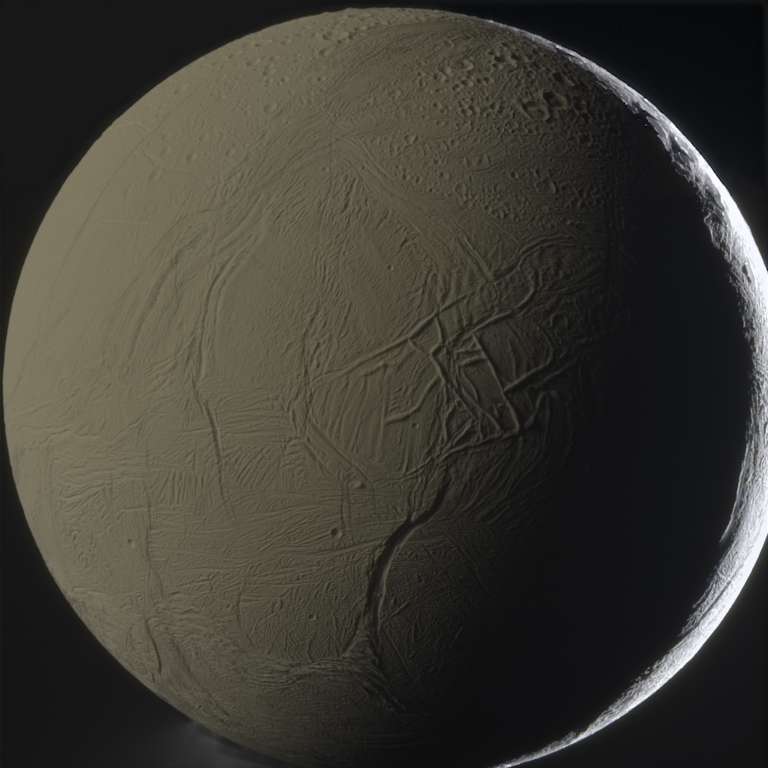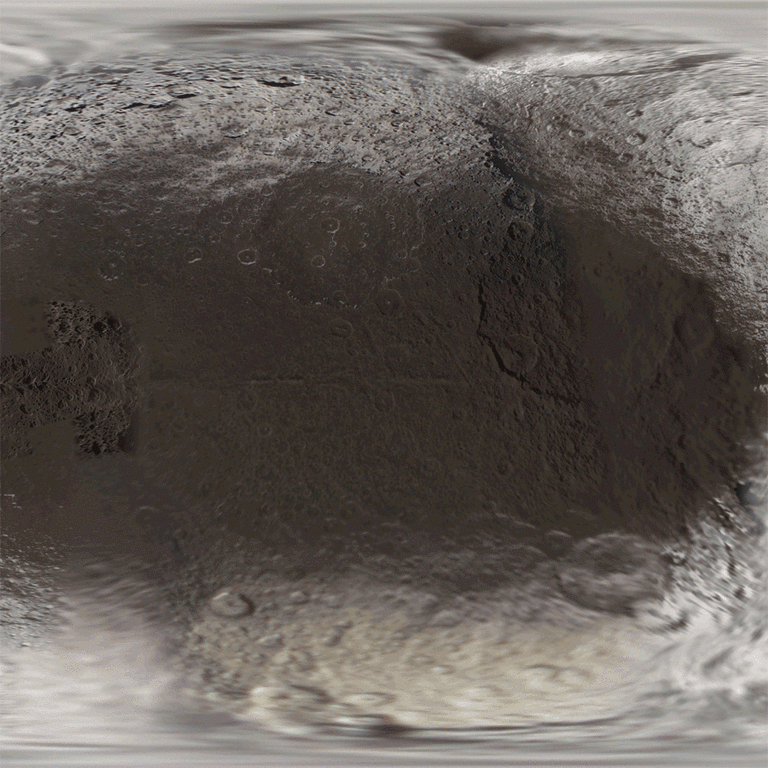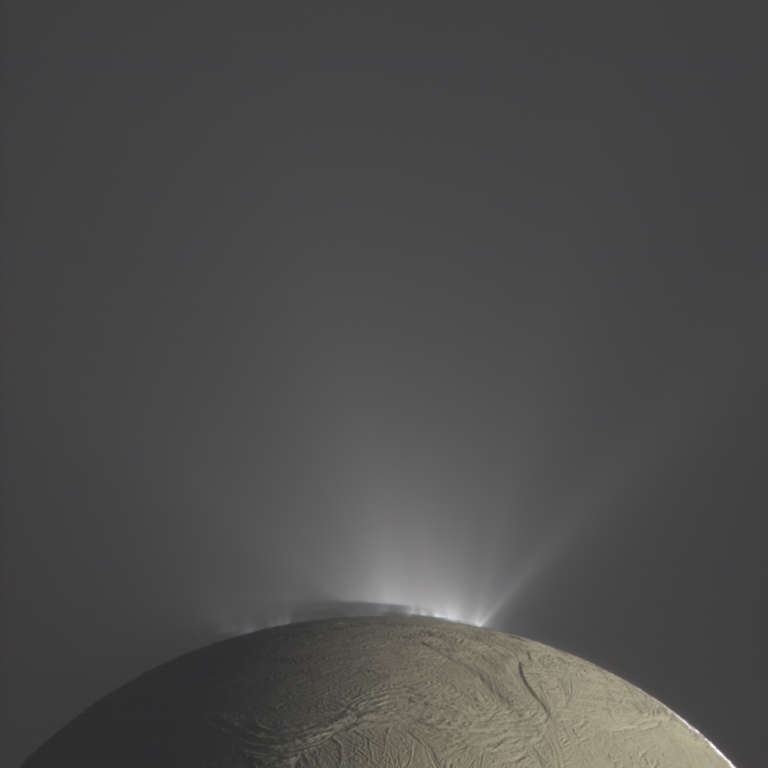All
All
Stories, updates, insights, and original analysis from The Planetary Society.
Enceladus huffs and puffs: plumes vary with orbital longitude
In which I finally get around to writing about a paper published last August: Enceladus' plumes sometimes spout more and sometimes spout less, depending on where Enceladus is in its orbit. This discovery was enabled by Cassini's longevity at Saturn, and we'll be able to follow up on it, as long as Cassini is allowed to complete its mission.
Europe Will Select Its Next Major Science Mission in November
The European Space Agency will announce two major science missions this November, one of which is likely to be devoted to solar system exploration.
Scale comparisons of the solar system's major moons
A few presentation slides with pretty pictures, sized to scale, of the large moons of the solar system.
One Ocean World Among Many
I'm absolutely floored when I stop to think that our beautiful blue ocean is only one of perhaps a half dozen or more oceans on other worlds in our solar system, and only one of probably millions (or more) oceans on other Earth-like planets in our galaxy. Oceans abound!
Planetary Society Weekly Hangout: Reports from the Lunar and Planetary Science Conference
On Thursday at noon PDT / 1900 UTC I'll report on some of my favorite findings from LPSC, and answer your questions about the latest planetary science.
LPSC 2013: License to Chill (or, the solar system's icy moons)
Reports from the March 19 session at the Lunar and Planetary Science Conference covering eight icy moons in the outer solar system: Ganymede, Europa, Dione, Rhea, Mimas, Tethys, Enceladus, and Miranda.
Enceladus: A problem of contrast
Time for my quarterly foray into the Cassini archival science data! The very first image I downloaded from the January 1, 2013 data release presented an interesting challenge to my image processing skill. I'll show you the pretty picture of Enceladus and then explain how I processed it.
Happy Cassini PDS Release Day!
It's a quarterly feast day for me: the day that the Cassini mission delivers three months' worth of data to NASA's Planetary Data System. Here's a few images processed from the October 1, 2012 data release.
Pretty pictures from Cassini's 1 May 2012 Dione flyby
Cassini performed its last of three close encounters with Enceladus for 2012 two days ago, and followed the flyby with some spectacular images of Dione.
Pretty pictures from Cassini's weekend flybys of Enceladus and Tethys
Cassini flew past both Enceladus and Tethys on April 14. Here's a cool animation of its approach to Enceladus' plumes, and a pretty global picture of Tethys.
Pretty picture: Enceladus, in lovely color
Here's an awesome picture to start off the week. The data came from Cassini's flyby of Enceladus on January 31, 2011; it was part of Cassini's January 2012 data release.
More radar images of icy moons from Cassini: Iapetus, Enceladus, and Rhea
When I posted about the really cool Cassini SAR images of Enceladus a few weeks ago, I initially wrote that this was the first-ever SAR image of an icy moon other than Titan. Several people (some readers and two members of the Cassini science team!) corrected that statement: Cassini has performed SAR imaging of other icy moons (including Enceladus) before.
First-ever high-resolution Synthetic Aperture Radar image of Enceladus
On the November 6, 2011 flyby of Enceladus -- the third such flyby in just a few weeks -- the Cassini mission elected to take a SAR swath instead of using the optical instruments for once. So here it is: the first-ever SAR swath on Enceladus. In fact, the only other places we've ever done SAR imaging are Earth, the Moon, Venus, Iapetus, and Titan.
Pretty pictures & movies: Eye candy from two recent Cassini Enceladus flybys
Cassini has completed two very close flybys of Enceladus in less than three weeks, one of them just this morning, and the images from that encounter have already arrived on Earth.
Saturnlit moon, sunlit fountains
It's been a week of very heavy science on this blog, so I thought it'd be nice to go into the weekend with a post in which a breathtaking picture speaks for itself, without needing my thousands of words.
Some first impressions of EPSC-DPS meeting
Today they turned on the scientific fire hose at the Division of Planetary Sciences / European Planetary Science Congress meeting happening here in Nantes, France. My brain already feels full and I still have four more days!
Pretty pictures: Dancing moons
Since Cassini currently orbits Saturn within the plane of Saturn's rings, it has lots of chances to catch two or more moons in the same photo. One such
Tethys and Dione don't seem to be active after all
About four years ago I wrote a blog entry about an ESA press release about paper published in Nature that suggested that Saturn's moons Tethys and Dione might have volcanic activity, like Enceladus. A new paper published in Icarus casts doubt on that conclusion.
Scale solar system presentation slide, a provisional version for you to review
I'm preparing a talk for the Pacific Astronomy and Telescope Show here in Pasadena on Sunday afternoon at 1:45. I have spent the morning putting together a slide that I have long wanted to have for presentations.
Pretty picture: five moons for Cassini
Explaining how to combine the red, green and blue images from a recent Cassini image session containing five of Saturn's moons: Janus, Pandora, Enceladus, Mimas and Rhea.


 Explore Worlds
Explore Worlds Find Life
Find Life Defend Earth
Defend Earth


 Sun
Sun Mercury
Mercury Venus
Venus Earth
Earth Mars
Mars Jupiter
Jupiter Saturn
Saturn Uranus
Uranus Neptune
Neptune Small Bodies
Small Bodies